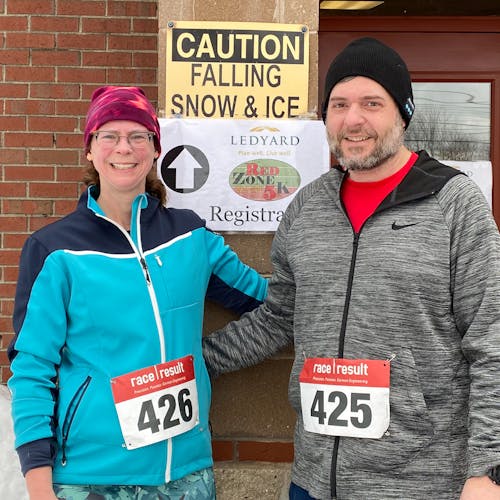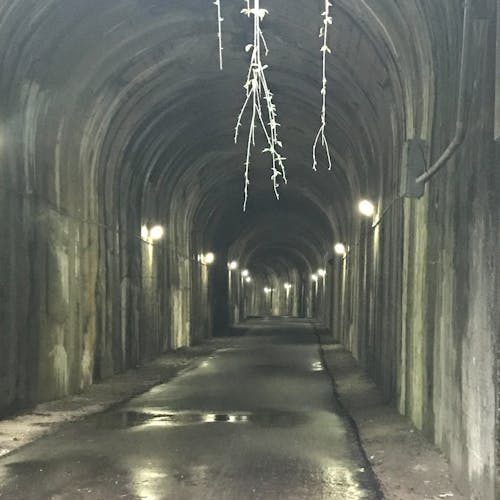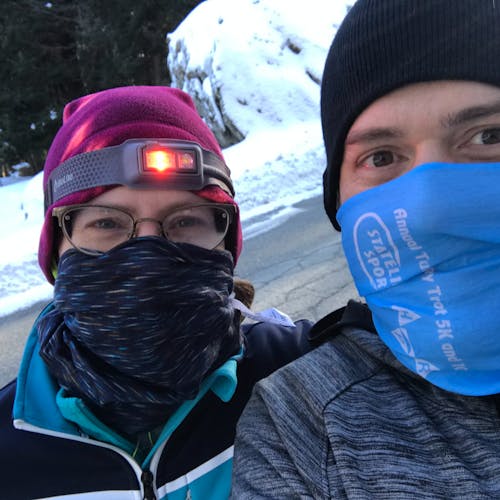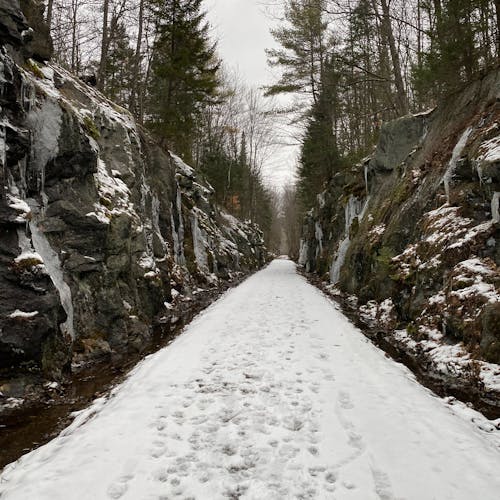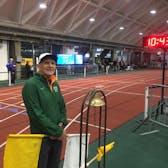From 5k to 50k
By: Chris Wolfe
I have been an on/off runner since I was about 17 and trying to get fit for soccer season. I would try running once every couple of years, inevitably get injured or travel or something else came up and I’d stop without even realizing it. While active with rock climbing and hiking, running never really stuck. Until now.
In October 2018, I signed up for a work 5k to be held during my company’s annual sales kickoff in January 2019. My only goal was to run the whole 5k and not die. On Dec. 10, 2018, I finally got motivated to start training. I could not even run 1 mile at that point. I kept at it and slowly worked up to 2 miles on the treadmill. In late December, I found out I was prediabetic – likely caused by a bad late night potato chip habit. On January 1, 2019, I committed to running an average of 1 mile a day in 2019, inspired by my cousin. I started with 2.6 miles on the treadmill at a 12:45 pace on January 2. That first 5k in January in Florida was more fun than I imagined it would be, even though running the whole distance was so hard. My time was 34:15 and I could not have been happier. I did the Shamrock Shuffle that March, with a time of 31:53 – a huge improvement - and also so much fun! My husband, Sean, started running shortly after I did, with the Skip Matthews race in 2019 being his first road race and our 1st together. I went on to run just over 1000 km in 2019, including 10 races and 2 half marathons – including the CHAD Half in October. I did the UVRC running series and met a lot of people in the local running community. I was looking forward to 1200 miles and 3 half marathons including the CBHM in 2020 and Sean thought he might run a fast 10k. Life in 2020 has been much different than we could have imagined. The races went virtual and the running goals changed. In the end, 3 half marathons became the Daisy-Methodist-Eastman-Storrs Hill run, then the Marine Corp Marathon, then a rail trail 50k. For Sean, that 10k became a sub-25 min 5k and then a sub 2 hour half marathon – all goals we completed. Lessons we learned along the way and more about our running journey are below.
5 Lessons Learned in 2019 – How to train and run
- Consistency and ramping up slow and steady is key. I avoided injury and was able to become a runner this go-around because of the “dreadmill”. I did not like running on it, so I just put in the time and ramped up very slowly, always on incline 2. I have continued to slowly add distance and mostly been successful in avoiding injury.
- Everyone is running just as hard as you are. I learned this when racing. Everyone is working hard and doing their best. The race is really with yourself and maybe those around you in your personal race space or your local “rivals”. “Comparison is the theft of joy” as they say on The Running Channel. Just run hard and have fun. Sometimes, you might place unexpectedly, especially when the race is small. This happened to me twice and Sean once ☺
- “Finish lines, not finish times” or “It’s not how fast, it’s how far” - Just completing a race or even a regular training run is an accomplishment. Measure improvement, against yourself, and not absolutes, especially the first time you run a new route or a longer distance.
- Running clothes and running shoes matter – Let’s just say blisters and chafing are not fun. Athletic clothing and properly laced, tied and fitted running shoes matter. So does the right clothing and shoes for the conditions – for example when running in the snow in late December vs the hot of July. Also, wear your contacts in humid, cold, rainy, misty or any conditions other than sunny, really. Your glasses will fog up.
- You can run along Rt. 120 and in many other places – There’s more running options than the Rail Trail and the Mascoma Greenway, especially when they are frozen over in winter. Put on your bright clothes and lights, make sure you stay aware of the surroundings and can hear and get out there. You can find lots of places to run when on biz travel too (when it existed). And, sometimes you see fun cool things.
5 Lessons learned in 2020 – How to go farther and stay healthy
- The weather is always fine. You can run at 0F, you just need a hat, a buff around your face and neck, a long-sleeved tee, a fleece, a light coat, 2 pairs of gloves, tights, cross country ski pants, wool socks, and your sneakers. You can also run at 80 F, just wait for the sun to set, bring water, and use electrolytes.
- Hydration – You need more water than you think. I actually learned this lesson in cold weather when I managed to severely dehydrate myself over the course of a week just not drinking enough and then a 10k on a sunny Friday evening in April. I l did it again on my first 16 mile run in June when preparing for my parts of the Virtual Gap Relay. Keep drinking, all the time, when running and when not. And don’t forget the electrolytes because over-hydration is awful too, speaking from experience the day after that Friday evening dehydration in April.
- Nutrition – What will your body like? Gels and high sugar options make me nauseous. After experimenting, a combination of Gatorade, water, Base Salt and granola bars works for me for up to a marathon. I need something different for longer runs and am exploring options, currently experimenting with Muir Energy. For good running nutrition, also eat as soon as you can when you are done running. This really impacts recovery, especially for longer distances.
- Cross-training is important. One personal consequence of COVID-19 shutdowns was closure of the Green Mountain Climbing Center in Quechee. I did not realize how much climbing helped my running, although I knew running fitness made me a better climber. Mid-2020 muscle imbalances lead to some niggles that I fortunately addressed with PT like exercises in time. Continued upper body muscle decline, hypermobile joints and new developing issues have me starting more cross-training late in 2020.
- Your limits are hard to find. For the virtual GAP Relay, I trained to run 16 miles one day, followed by 10.2 the next. I ran the Lebanon townlines from Plainfield to Hanover and back for 16 miles and from Enfield to Vermont for 10.2 miles. I was playing with distance in early September, training for 20 miles with 2500 feet of gain, when I decided to run the virtual Marine Corp Marathon to support my aunt (and uncle) in late October. That went better than I expected, although I learned some hard lessons about recovery. That race prompted me to think about 50k before I lost too much training. Then, we did the Daisy-Methodist-Eastman-Storrs Hill run (17.1 miles, with almost 2500 feet gain) on Thanksgiving Day, which went fine and got me thinking some more. Then, I saw Colin’s Rail Trail 50k article in the December 2020 newsletter. So, on December 12, I decided just to see before the Rail Trail was covered with ice and snow and impassible for runners. Sean dropped me off in Andover and I ran 31.75 miles to Lebanon. Sean and my older son me at mile 18 with some Gatorade and Sean ran those last 4, very hard miles with me. About 3 hours after, I was feeling pretty good. Recovery was fine and now I am thinking about next year and longer runs. I already registered for the Runamuck 50k to help stay motivated. How far can I run in 2021?
